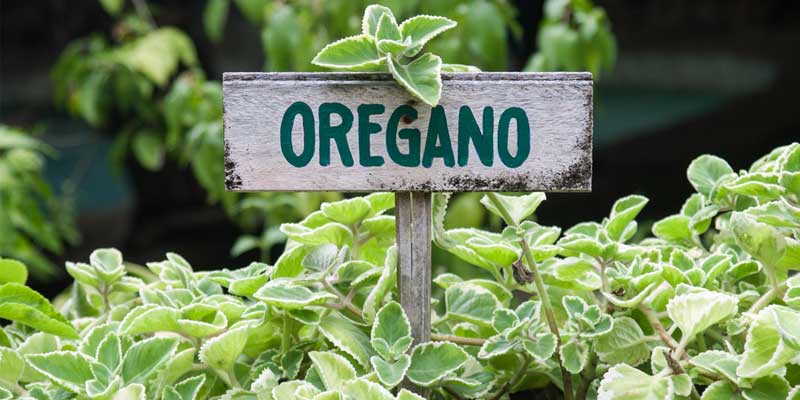Better Websites to own 2025
Jun 11, 2025

Got a good harvest of oregano in your garden that you have more than enough? Or had to buy a huge bunch of the herb in the store because they don’t have small batches? Then why not freeze-dry them before they turn mushy or so dry they’re tasteless?
Freeze-drying herbs is a great way to preserve them because of two things. One is that you keep all that wonderful flavor even twice as intense as fresh ones. This means a little goes a long way.
Second is the delicious, vibrant green color stays. You don’t get that brown, dull, lifeless herb that you see bottled in stores. When you add the freeze-dried herb to your dish or rehydrate it, you’ll see a change to a deep green color. People won’t even believe you added freeze-dried herbs at a glance.
You need some basic kitchen tools to freeze dry oregano. These are:
You won’t need parchment paper for this because oregano doesn’t have a lot of moisture. So if you take out excess water after washing, oregano leaves won’t stick to the tray.
There are wide varieties of oregano, and you may have a favorite. You can choose whatever type of oregano that you prefer and even freeze-dry several at the same time. What’s important is to choose one that you love to use regularly.
It would be great if you have a rare favorite in stores or hard to grow in your garden. This way, you can harvest or buy in excess and store them for future use.

Wash your herb well and dry it thoroughly using a salad spinner. Washing them first before picking out the leaves will help keep the essential oils in the leaves.
Depending on the type of oregano you choose, you may need to remove the leaves from the stems. Especially when you’ve harvested or bought oregano with hard and woody stems. But if the stems are soft and tender, leave the stems on and remove the leaves after freeze-drying.
Take out all the undesirable leaves as well. Those that are yellowish, dry, or mushy won’t give you satisfying flavors or results.
Once you’ve prepared the herb, don’t let it sit for too long that it air dries itself. You need to lock in as many essential oils as possible. Either put the herbs immediately in the freezer or your freeze dryer.
Whatever you do, don’t chop the leaves. You only use the knife to “shave” the leaves off the stems faster. Chopping the leaves make them loose their oils and you’ll end up with tasteless herbs you probably won’t use.
It’s always good to pre-freeze your herbs before freeze-drying, but this is an option. It helps for more efficient freeze-drying, especially if you’ve got some food lined up. For example, you can save time by freezing the herbs while you’re freeze-drying chicken, pork chops, or salmon.
You can use a deep freezer to do this for better freezing. But this can cause a bit of micro damage to the leaves because this creates big ice crystals. Use the freeze dryer tray as a container if you pre-freeze your herb. This way, you don’t have to worry about how to transfer frozen herb to a warmer tray. You won’t have to deal with melting as well.
You can use food-grade liquid nitrogen and dry ice to preserve the leaves better. It makes for better freezing because it gives food a better look and texture.
Whatever method you choose, make sure that you act fast. You need to keep the food frozen until it reaches the freeze dryer for better results.
Once your oregano is ready, it’s time to start freeze-drying.
Depending on how much you’re freeze-drying, this can take 16 to 24 hours. Also, we recommended that you set the freeze-drying time because of our spinach experience. Some leaves were a touch too dry than usual, and we weren’t too happy about it. A lower drying temperature can also mean a longer drying time too.

The oregano leaves should be dry and crumbly to the touch. Touching them should give that satisfying rasping sound similar to you stepping on fallen autumn leaves. If any of the leaves feel moist, soft, and cool to the touch, add 1-3 of drying time.
You can store freeze-dried oregano in Mylar bags for long-term storage. They keep out air and moisture well, better than any zip lock bags can do. In addition, there are special Mylar bags that you can vacuum seal. But straw and a little bit of technique with your sealer can also help you create a vacuum seal with regular ones.
Mason jars also work, especially if you use the oregano on demand. Like Mylar bags, you can use vacuum sealers to take out air from the container.
Whatever method you choose, always add oxygen absorbers. Oxygen can cause a chemical reaction in your herb and turn it into an unappetizing brown condiment. For long-term storage, keep the bags and jars in a dry, dark place with temp not going above 72°F (22 °C).
Your freeze-dried oregano can last 25-30 years if you meet proper storage conditions. Imagine having the refreshing taste of fresh herbs years after harvesting and when you’re in a situation where herbs are hard to come by.
What do you plan to do with your freeze-dried herb? Let us know in the comment section.
Also don’t forget to subscribe to our YouTube Channel for more tips about freeze-drying.